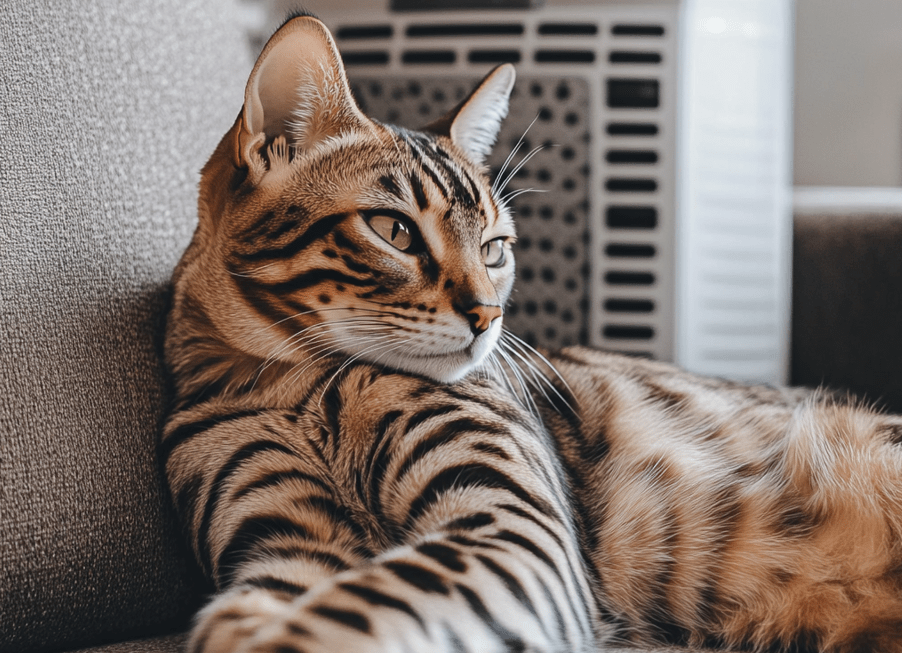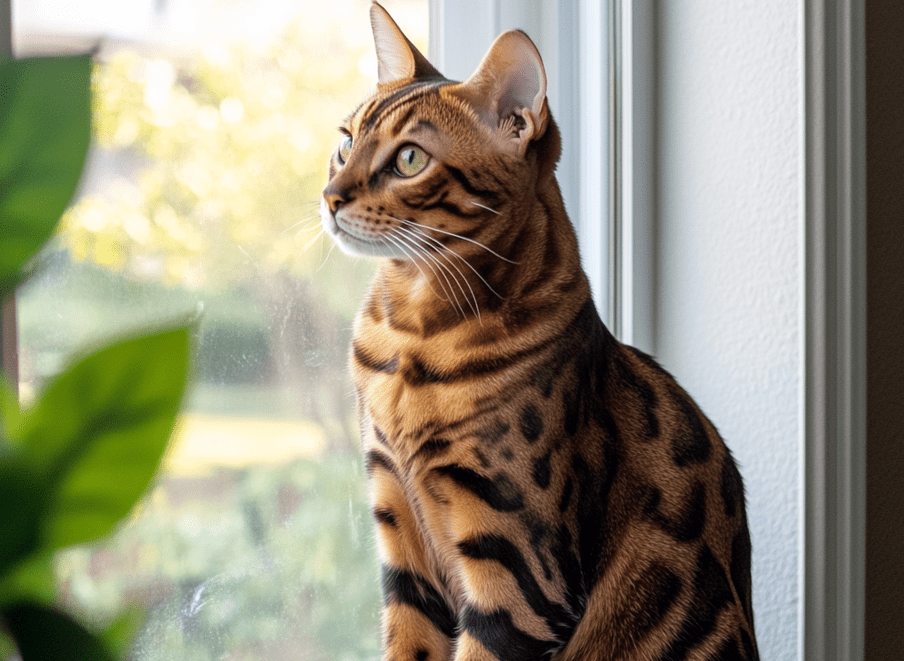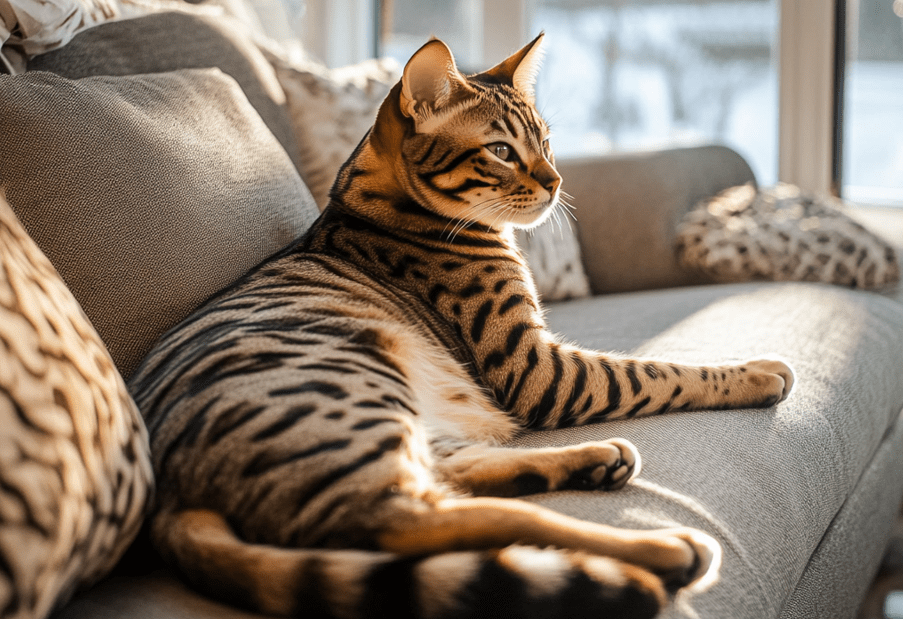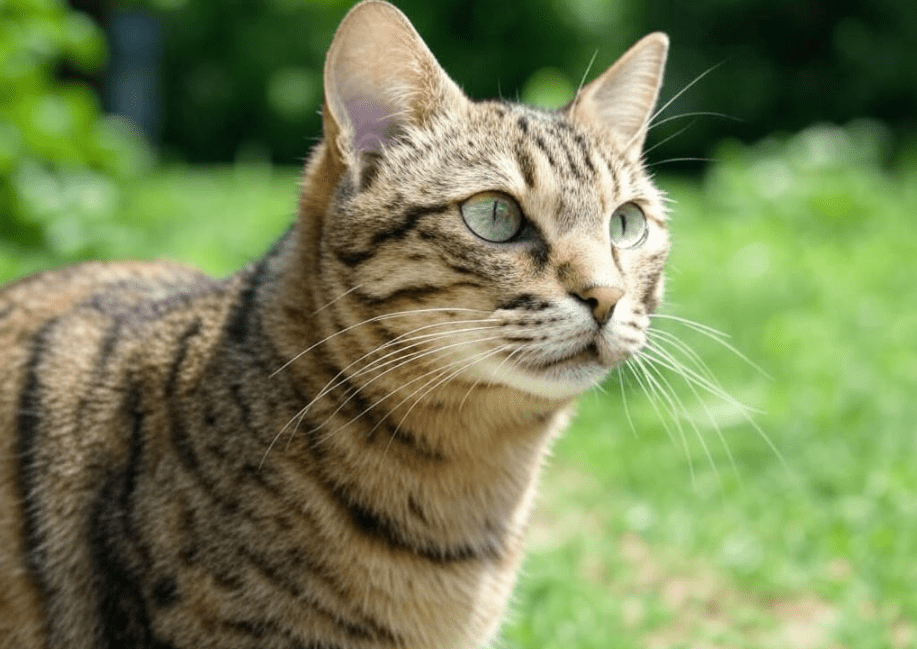
Bengal cats are known for their striking appearance and energetic personalities, but managing aggression in Bengal cats can be a challenge for many owners. These intelligent, active felines often display behaviors that may seem aggressive, such as biting, scratching, or hissing. Understanding the root causes of these behaviors and implementing effective solutions is key to fostering a harmonious relationship with your Bengal. This comprehensive guide explores the reasons behind aggression in Bengal cats and provides practical, actionable strategies to address it, ensuring a happy and healthy bond with your pet.
Introduction to Bengal Cats and Their Unique Traits
Bengal cats, with their exotic, leopard-like coats and playful demeanor, are a breed that captures the hearts of many. Originating from crosses between domestic cats and the Asian leopard cat, Bengals are highly energetic, curious, and intelligent. These traits, while endearing, can sometimes manifest as aggressive behaviors if not properly managed. Unlike typical house cats, Bengals have a strong prey drive, a need for mental stimulation, and a desire for physical activity. Failing to meet these needs can lead to frustration, which may be expressed through aggression.
This article delves into the causes of aggression in Bengal cats, from instinctual behaviors to environmental triggers, and offers solutions to help owners manage and prevent aggressive tendencies. Whether you’re a new Bengal owner or an experienced one, this guide will equip you with the knowledge to create a peaceful home environment.
Understanding Aggression in Bengal Cats
Aggression in Bengal cats can take many forms, including biting, scratching, swatting, hissing, or growling. While these behaviors may seem alarming, they are often a form of communication. Bengals are not inherently “mean” or malicious; instead, their actions are typically driven by unmet needs, instincts, or external factors. To effectively manage aggression, it’s essential to identify the type and cause of the behavior.
Types of Aggression in Bengal Cats
Play Aggression: Bengals are highly playful and may engage in rough play that mimics hunting. This can include pouncing, biting, or scratching, especially if they lack proper outlets for their energy.
Territorial Aggression: Bengals can be protective of their space, food, or favorite spots, leading to aggressive displays toward other pets or people.
Fear-Based Aggression: When feeling threatened or scared, a Bengal may lash out as a defense mechanism.
Redirected Aggression: If a Bengal is agitated by an external stimulus (e.g., seeing another animal outside), they may redirect their frustration onto a nearby person or pet.
Medical-Related Aggression: Pain or discomfort from health issues can cause a normally friendly Bengal to act out.
Why Are Bengal Cats Prone to Aggression?
Bengals’ wild ancestry contributes to their high energy and strong instincts. Their need for stimulation, both physical and mental, is significantly higher than that of other breeds. Without adequate enrichment, Bengals may become bored or frustrated, leading to behaviors that appear aggressive. Additionally, their intelligence means they require consistent training and boundaries to thrive in a domestic environment.
Common Causes of Aggression in Bengal Cats
To address aggression, it’s crucial to pinpoint its root cause. Below are the most common triggers for aggressive behavior in Bengal cats, along with insights into how they manifest.
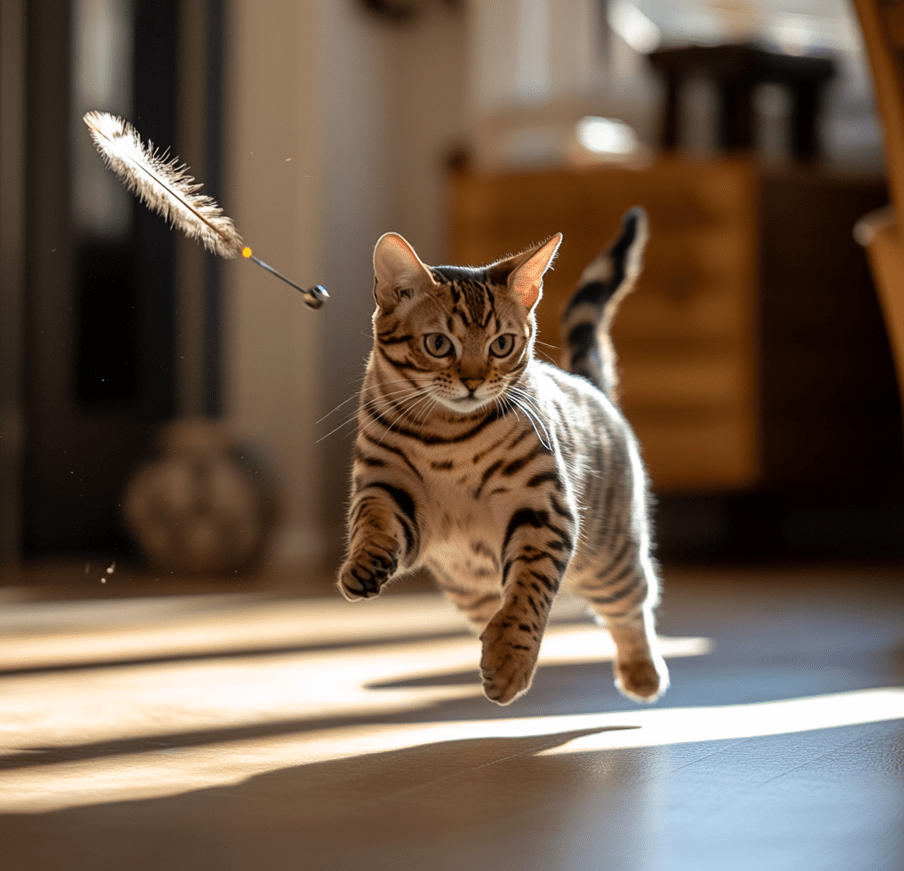
1. Lack of Mental and Physical Stimulation
Bengals are not your average lap cats. Their high energy levels and curious nature require ample opportunities for play and exploration. Without sufficient activities, they may channel their pent-up energy into destructive or aggressive behaviors, such as attacking hands or furniture.
2. Improper Socialization
Bengals that are not properly socialized during their kittenhood may struggle to interact appropriately with people or other animals. Early exposure to various environments, sounds, and interactions helps them develop confidence and reduces fear-based aggression.
3. Environmental Stressors
Changes in the household, such as new pets, moving, or loud noises, can stress a Bengal and trigger aggressive responses. Their sensitivity to their surroundings makes a stable, predictable environment essential.
4. Territorial Instincts
Bengals are territorial by nature and may become aggressive when they feel their space is being invaded. This can occur with the introduction of a new pet or even when guests visit.
5. Medical Issues
Undiagnosed health problems, such as dental pain, arthritis, or skin irritations, can cause discomfort that manifests as aggression. A sudden change in behavior warrants a veterinary checkup to rule out medical causes.
6. Inconsistent Training or Boundaries
Bengals thrive on structure and clear expectations. Inconsistent discipline or lack of training can lead to confusion, resulting in behaviors like biting or scratching to assert dominance or seek attention.
Solutions for Managing Aggression in Bengal Cats
Managing aggression in Bengal cats requires a combination of understanding their needs, addressing triggers, and implementing consistent strategies. Below are proven solutions to help curb aggressive behaviors and promote a peaceful home.
1. Provide Ample Physical and Mental Stimulation
To prevent boredom and frustration, ensure your Bengal has plenty of opportunities for exercise and enrichment.
Interactive Toys: Use toys like feather wands, laser pointers, or puzzle feeders to engage their hunting instincts. Rotate toys regularly to keep them novel.
Climbing Structures: Bengals love to climb and perch. Invest in cat trees, shelves, or window perches to give them vertical space.
Daily Play Sessions: Dedicate at least 20–30 minutes twice a day to active play. Mimic hunting scenarios to satisfy their prey drive.
Training Activities: Teach tricks like “sit” or “fetch” to challenge their intelligence and strengthen your bond.
2. Socialize Your Bengal Early and Often
Proper socialization is key to reducing fear-based and territorial aggression.
Expose to New Experiences: Gradually introduce your Bengal to different people, animals, and environments during their first 12 weeks.
Positive Reinforcement: Reward calm behavior with treats or praise to reinforce positive interactions.
Supervised Introductions: When introducing a new pet, do so slowly, using scent swapping and controlled meetings to minimize territorial disputes.
3. Create a Stress-Free Environment
A calm environment helps reduce anxiety-driven aggression.
Safe Spaces: Provide hiding spots or quiet areas where your Bengal can retreat if overwhelmed.
Consistent Routine: Maintain regular feeding, play, and sleep schedules to create predictability.
Minimize Triggers: Identify and reduce stressors, such as loud noises or sudden changes, whenever possible.
4. Use Positive Reinforcement Training
Training is essential for managing a Bengal’s strong personality and preventing unwanted behaviors.
Redirect Aggression: If your Bengal starts to bite or scratch, redirect their energy to a toy or activity.
Reward Good Behavior: Use treats, praise, or play to reinforce calm and non-aggressive actions.
Set Boundaries: Consistently discourage behaviors like biting by saying “no” firmly and stopping play immediately.
5. Address Territorial Behaviors
To manage territorial aggression, make your Bengal feel secure in their environment.
Scent Marking: Allow your Bengal to rub against furniture or you to spread their scent, which can reduce territorial anxiety.
Separate Resources: Provide multiple litter boxes, food bowls, and resting areas to prevent competition with other pets.
Gradual Introductions: When adding a new pet, use barriers like baby gates to allow visual contact without direct interaction.
6. Rule Out Medical Issues
If aggression appears suddenly or is accompanied by other symptoms (e.g., lethargy, changes in appetite), consult a veterinarian.
Comprehensive Exam: Request a full health check, including dental and bloodwork, to identify underlying issues.
Pain Management: Follow your vet’s recommendations for treating conditions that may cause discomfort.
Behavioral Medications: In severe cases, your vet may prescribe anti-anxiety medications to help manage aggression.
7. Spay or Neuter Your Bengal
Unspayed or unneutered Bengals are more likely to exhibit territorial or hormonal aggression. Spaying or neutering can reduce these behaviors and improve overall temperament.
8. Consult a Professional
If aggression persists despite your efforts, seek help from a feline behaviorist or trainer specializing in Bengals. They can assess your cat’s behavior and provide tailored strategies.
Preventing Aggression in Bengal Cats
Prevention is always better than reaction. By proactively meeting your Bengal’s needs, you can minimize the likelihood of aggressive behaviors.
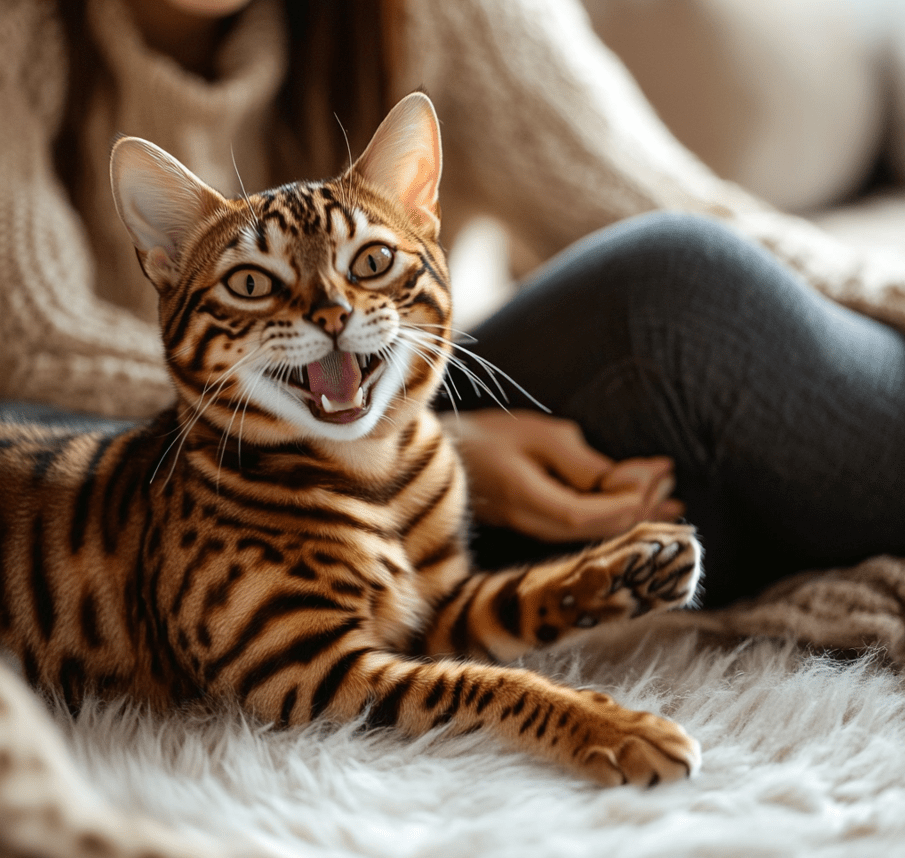
Start Training Early: Establish rules and routines from kittenhood to set clear expectations.
Maintain a Stimulating Environment: Continuously provide new toys, activities, and spaces to keep your Bengal engaged.
Monitor Interactions: Supervise play with children or other pets to ensure it remains gentle and appropriate.
Regular Vet Checkups: Schedule annual exams to catch and address health issues before they lead to behavioral changes.
Common Mistakes to Avoid When Managing Aggression
While addressing aggression, avoid these pitfalls that can worsen the behavior:
Punishing Your Cat: Yelling or physical punishment can increase fear and aggression.
Ignoring the Behavior: Dismissing aggression as “normal” can allow it to escalate.
Inconsistent Responses: Mixed signals confuse your Bengal and undermine training efforts.
Neglecting Enrichment: Failing to provide enough stimulation guarantees boredom and frustration.
Real-Life Success Stories
To illustrate the effectiveness of these strategies, here are two examples of Bengal owners who successfully managed their cats’ aggression:
Case Study: Max’s Play Aggression
Max, a two-year-old Bengal, frequently ambushed his owner’s legs, leaving scratches. By increasing daily playtime with interactive toys and teaching Max to “sit” for treats, his owner redirected his energy. Within weeks, Max’s ambushes decreased significantly.
Case Study: Luna’s Territorial Issues
Luna hissed and swatted at a new kitten in the household. Her owner used scent swapping, provided separate resources, and gradually introduced the cats. After a month, Luna and the kitten were coexisting peacefully.
Conclusion
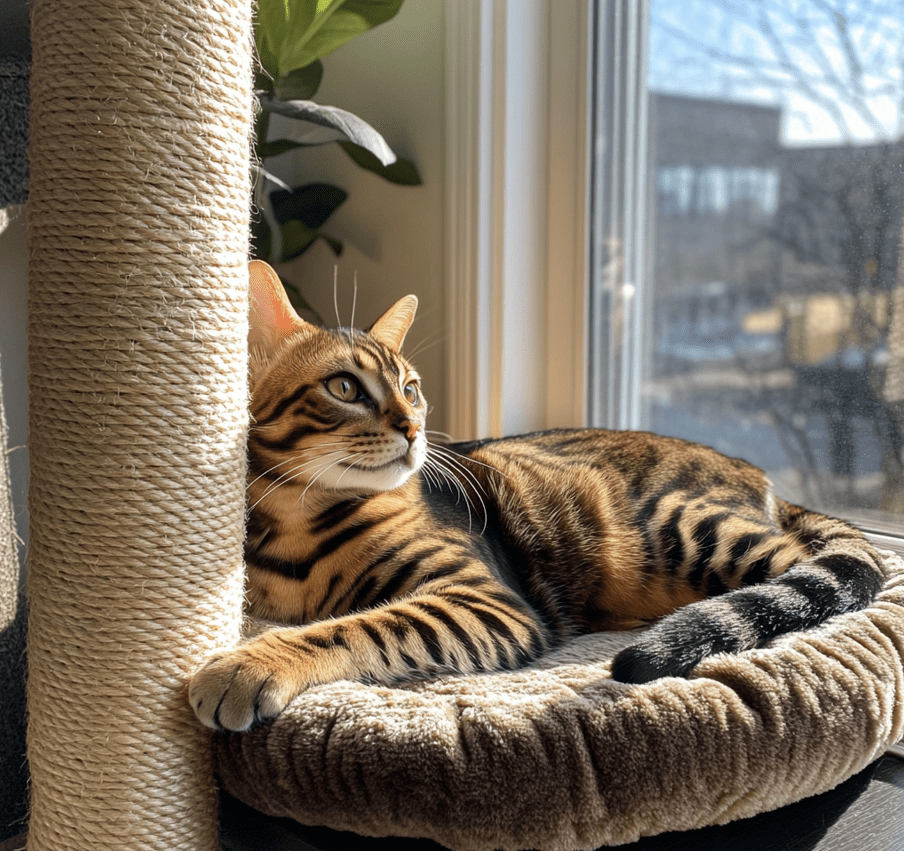
Managing aggression in Bengal cats is entirely possible with the right approach. By understanding the causes—whether it’s lack of stimulation, territorial instincts, or medical issues—and implementing solutions like enrichment, training, and a stress-free environment, you can transform your Bengal’s behavior and strengthen your bond. Bengals are extraordinary companions whose vibrant personalities shine when their needs are met. With patience, consistency, and love, you can create a harmonious home where your Bengal thrives.
For more personalized advice, consider consulting a feline behaviorist or veterinarian. Your Bengal’s happiness—and your peace of mind—are worth the effort.


